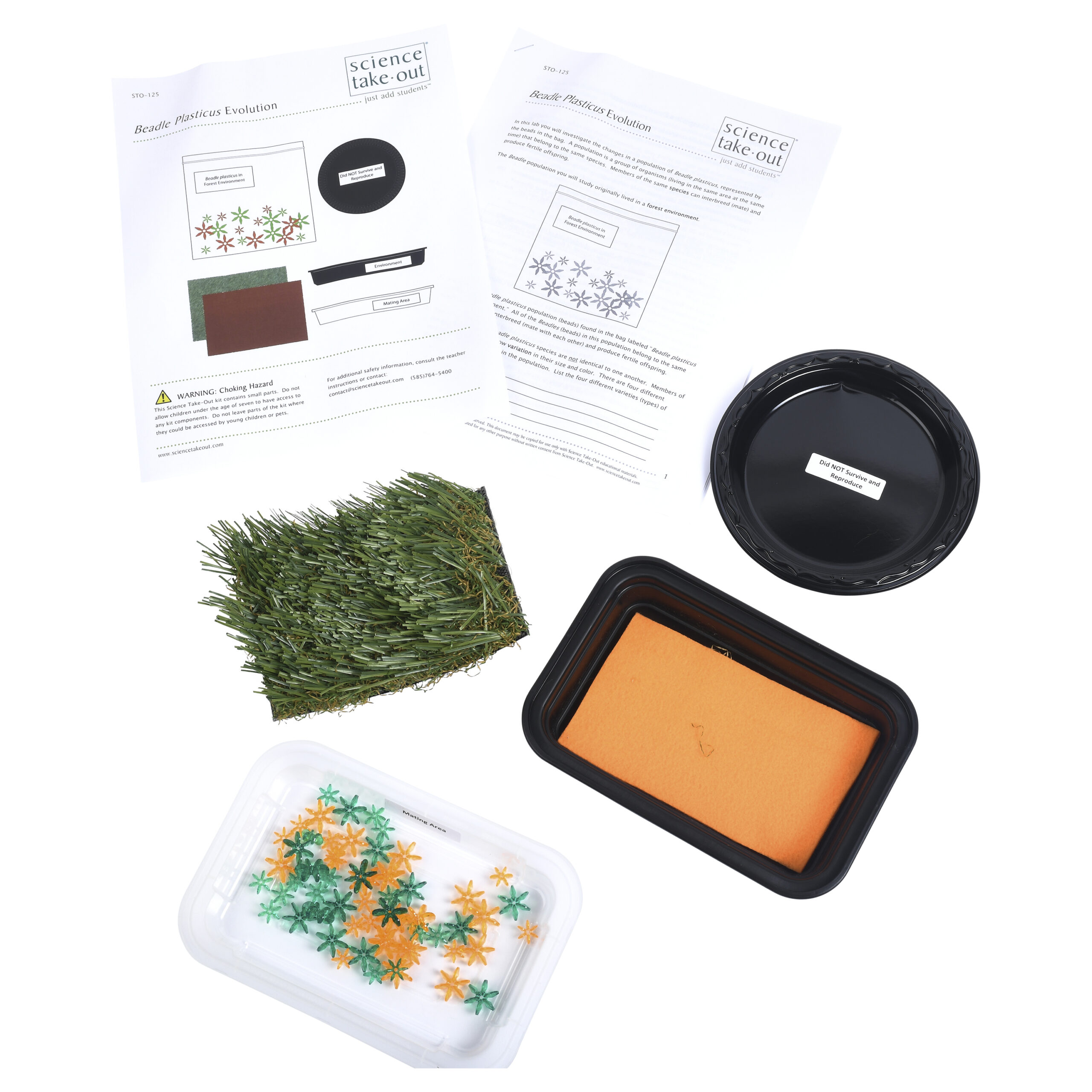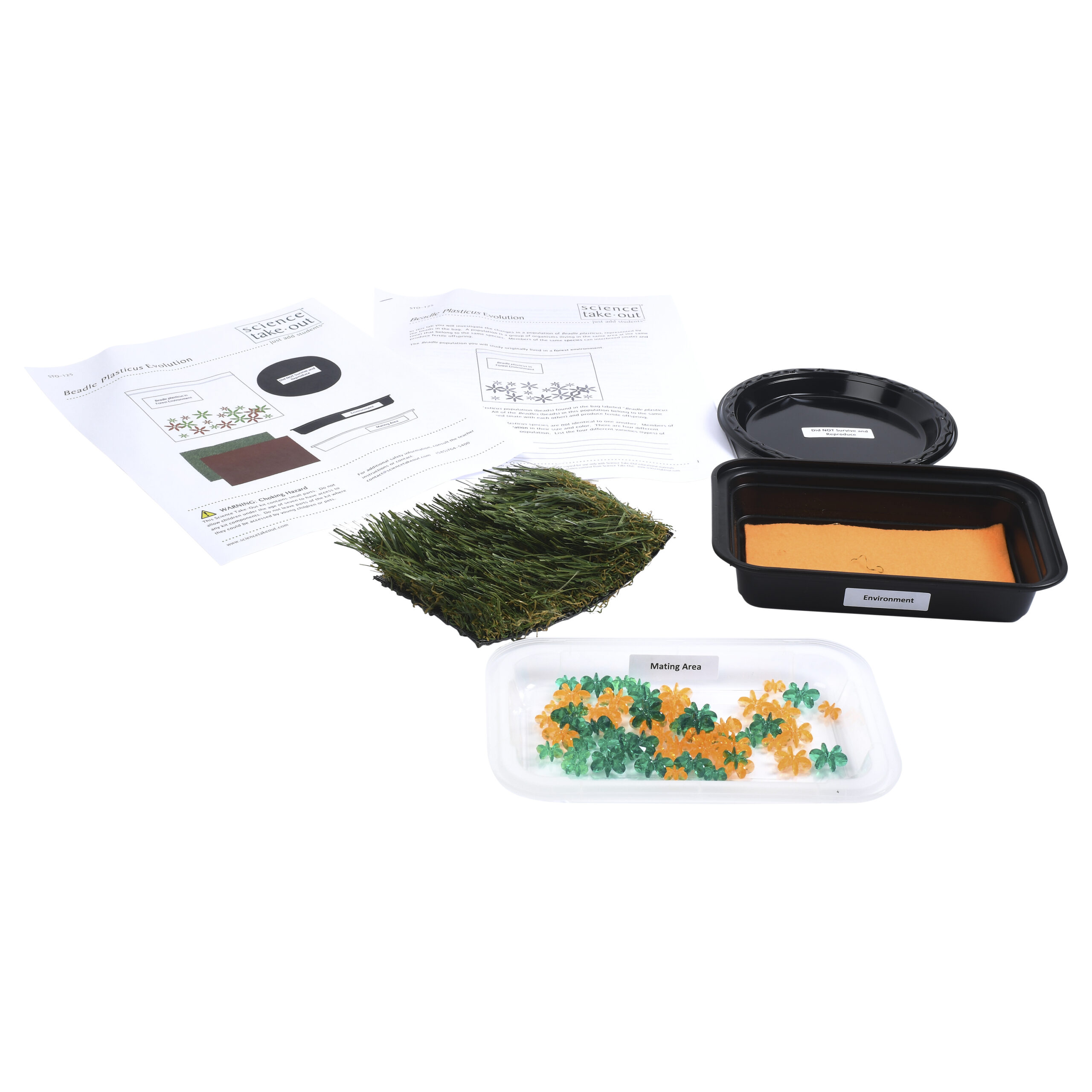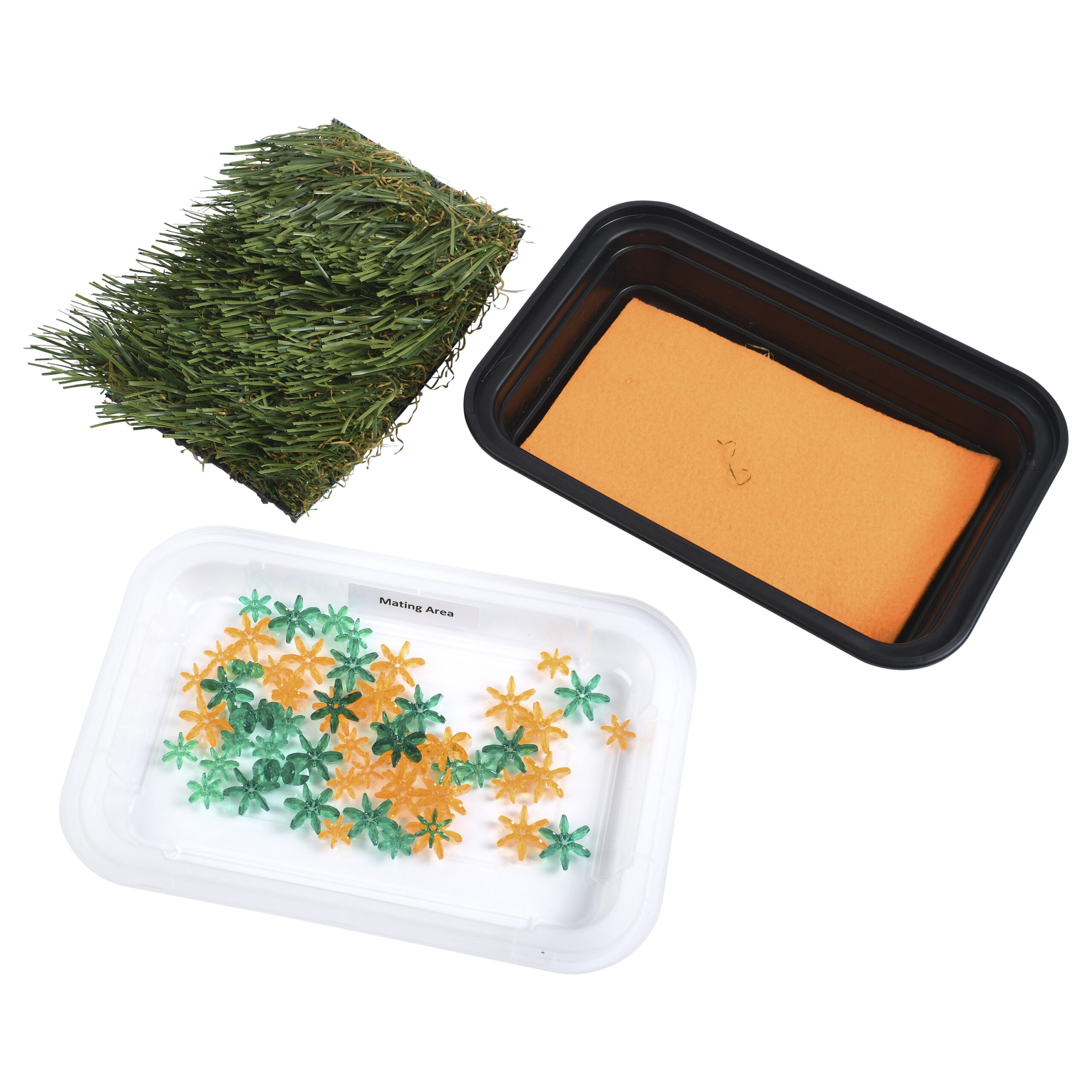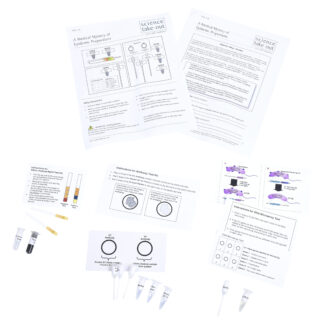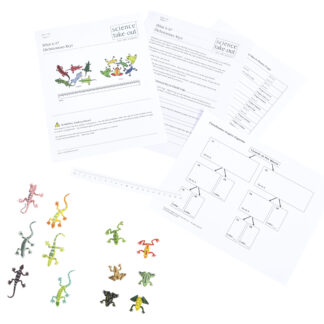Beadle Plasticus Evolution
$15.95 – $120.95
How do different environments affect a population of Beadles?
- Investigate the changes in a population of “Beadle plasticus” in different environments.
- Model how the environment affects the frequencies of “Beadle” characteristics.
Kit Includes
- Student instructions
- 1 bag of beads labeled “Beadle plasticus in Forest Environment”
- 1 plastic container labeled “Environment”
- 1 plastic container labeled “Mating Area”
- Brown “desert” material
- Green “grassland” material
- 1 plastic plate labeled “Did NOT Survive and Reproduce”
Quantity Discounts
Kits:
- 1 – 9 kits: $15.95 each
- 10 – 24 kits: $15.15 each
- 25+ kits: $14.36 each
Unassembled:
- 1 – 9 packs: $120.95 each
- 10+ packs: $114.90 each
Refills:
- This kit does not require refills since all its contents are reusable.
Correlation to Next Generation Science Standards (NGSS) Shop by NGSS »
Performance Expectations:
HS-LS4-3. Apply concepts of statistics and probability to support explanations that organisms with an advantageous heritable trait tend to increase in proportion to organisms lacking this trait.
Science & Engineering Practices
Analyzing and Interpreting Data - Apply concepts of statistics and probability (including determining function fits to data, slope, intercept, and correlation coefficient for linear fits) to scientific and engineering questions and problems, using digital tools when feasible.
Disciplinary Core Ideas
LS4.B: Natural Selection - Natural selection occurs only if there is both (1) variation in the genetic information between organisms in a population and (2) variation in the expression of that genetic information—that is, trait variation—that leads to differences in performance among individuals. The traits that positively affect survival are more likely to be reproduced, and thus are more common in the population.
LS4.C: Adaptation - Natural selection leads to adaptation, that is, to a population dominated by organisms that are anatomically, behaviorally, and physiologically well suited to survive and reproduce in a specific environment. That is, the differential survival and reproduction of organisms in a population that have an advantageous heritable trait leads to an increase in the proportion of individuals in future generations that have the trait and to a decrease in the proportion of individuals that do not.
- Adaptation also means that the distribution of traits in a population can change when conditions change.
Crosscutting Concepts
Patterns - Different patterns may be observed at each of the scales at which a system is studied and can provide evidence for causality in explanations of phenomena.
